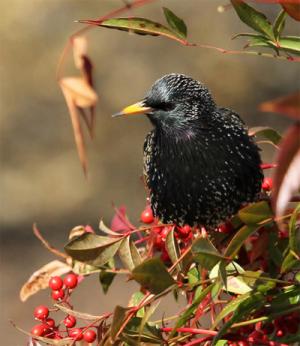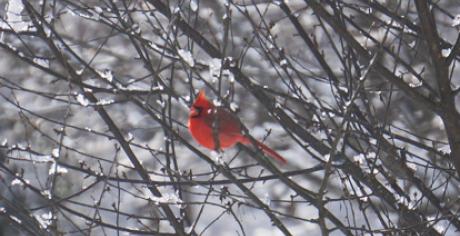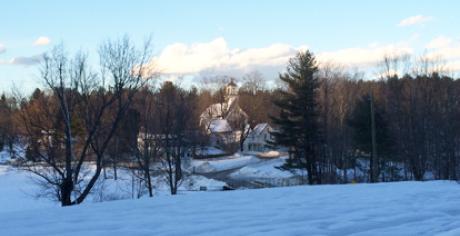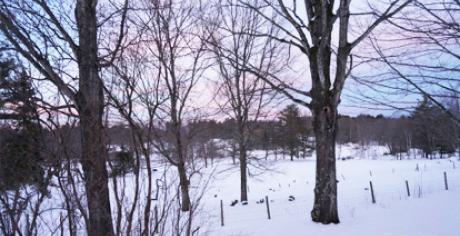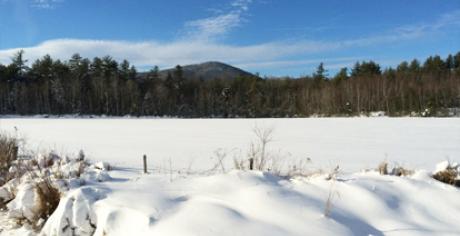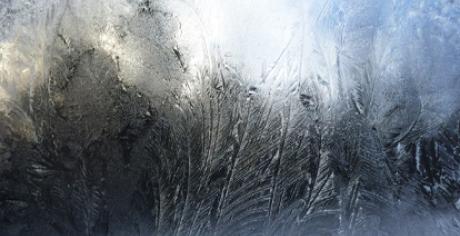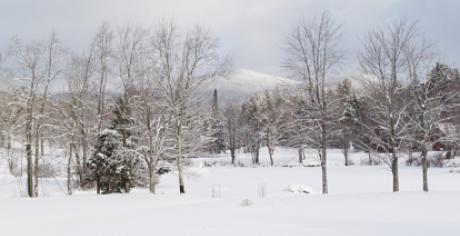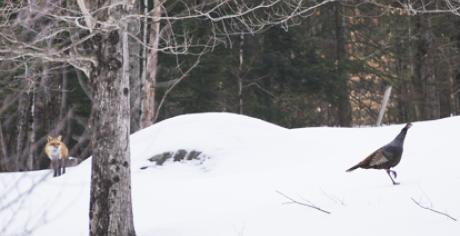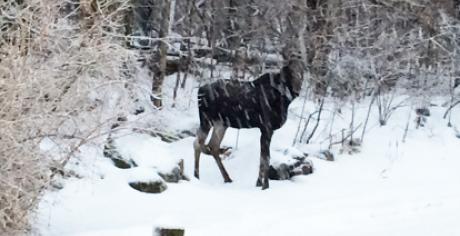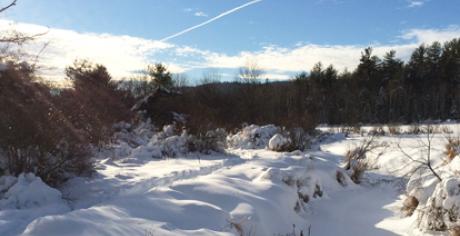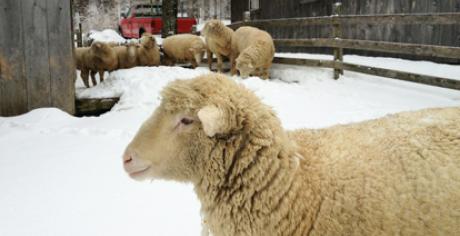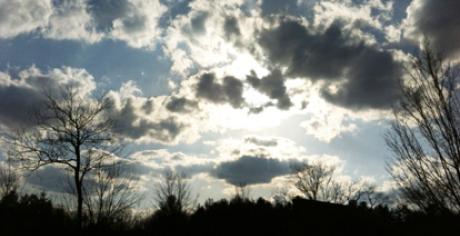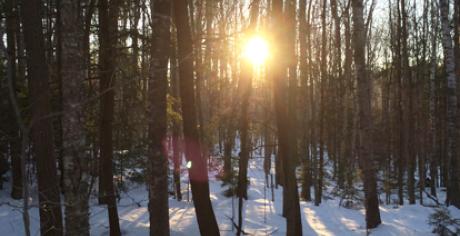What's New in Nature? 2023 Archive

Winter arrives this year on December 21, 2023. On the winter solstice, those of us who live in the Northern Hemisphere are tilted as far away from our Sun as possible. Winter brings cooler weather, the joy of winter sports, curling by the fire, and the holiday spirit. It also brings shoveling, snow blowing, dealing with bad roads, and sometimes unbearable temperatures. What will winter bring this year??
In the NORTHEAST -
Will There Be Snow? Yes! Precipitation and snowfall will be above normal. The snowiest stretches occur in mid-to late November, mid-December and early to mid-January. There will be a white Christmas in the mountains, but it’s less likely in the foothills and along I-95.

"The last four years, we've had a pendulum shift between drought and deluge," said meteorologist Jim Salge, a fall foliage expert for Yankee magazine. "We really need that pendulum to stop in the middle for our forest to recover into a nice, healthy, unstressed state."
Salge said early pops of color through August and early September are giving him hints as to what this year's foliage will look like in New England.
"All signs are pointing to late," he said. "All signs are pointing toward a little bit muted this year."
Weather plays a big role in how and when leaves change during the fall. Last year, a lengthy summer drought followed by cool September nights provided the spark for a vibrant array of fall colors. But this year, cold snaps in February and May, followed by high humidity and heavy rainfall this summer, could create a different look.
"The leaves are changing color because as they start to die off, those sugars get trapped, and red pigments can go," Salge said. "But with everything so overwatered, they've become diluted, and the sugars aren't as intense. We don't have as much energy in the leaves to really pop the colors this year."
In recent weeks, some trees have gone straight from green to brown leaves. Salge said all the water from this summer has helped to spread fungus.
"There's been so much heat and humidity and rainfall that we've gotten a fungus in a lot of our big, old, stately maples," he said. "We've seen a lot of spotting on the leaves, premature browning and falling."
Even though colors will be more diluted this year, it's not all bad news for fall-lovers.
"Because the trees are generally healthy – just overwatered – any tree that has avoided the fungus, there's really no impetus for the leaves to fall," Salge said. "So, we think it's going to be a longer season, and it should make up for the lack of brightness."
The state has recently experienced chilly nights and sunny days, which helps trigger leaves to change color.
"The weather this week is the best-case scenario after all of the setbacks we've had this year," Salge said.
While the landscape is still mostly green, southern parts of New Hampshire will hit peak toward the second half of October.

In New England we commonly hear this animal being called a “fisher cat”, a confusing label since fishers are not in the cat family.
Dark brown to black in color with a silver tinge to the head and shoulders, fishers are medium-sized mammals similar in size to a fox. Fur tends to be softer and darker in females. Short legs bring them close the ground and they bound with hind paws landing in the place of the front paws, leaving sets of two foot prints side by side. Male fishers average about 10 to 12 pounds but definite sexual dimorphism is evident, with females being a little over half the weight of males. Fishers are members of the family Mustelidae, with relatives being weasels, martin, mink and otters.
Fishers prefer continuous forest with a thick canopy, translating in the northeast to dense lowland coniferous forests or a mixed forest of conifers and hardwoods. In distribution, fishers are found in southern Canada, New England, New York state and several other northern states. Home range varies from a little over two to 15 square miles depending on the quality of the habitat.
Fisher prey upon snowshoe hare, squirrels, mice, and birds, but perhaps their most intriguing catch is the porcupine. Although not immune to porcupine quills, the fisher has a hunting technique that results in it getting few quills. Using agility to its advantage, the fisher circles the porcupine, looking for opportunities to bite at its unprotected face, while staying away from its powerful tail. Even if the porcupine tries to climb a tree, the arboreal fisher can climb above it and threaten it back to the ground. After about one-half hour, the porcupine may be weakened enough for the fisher to flip it over and attack the ventral side, which has no quills. Porcupine quills rarely cause infection in fishers and accidentally ingested quills often end up in fisher scat! Fishers will also eat carrion. It is unusual for a healthy adult fisher to become prey itself.
Active day or night, fishers are more nocturnal in proximity to people.

The Tricolored Bat’s natural predators include many birds of prey, snakes, skunks, other bats, and Northern Leopard Frogs? It’s crazy to think of a frog eating a bat, but it shows how tiny these mammals are!
Tricolored Bats used to be considered one of the most common bats around. But, unfortunately, their numbers have been decimated by White-nose Syndrome. It’s thought that 70% of their population has succumbed to this fungal disease.
Now, the U.S. Fish and Wildlife Service is recommending that the tricolored bat be added to the list of endangered species in an effort to protect them.


The juvenile form of the red-spotted newt is the red eft. The eft lives on land for one to three years, then grows gills and transforms into its aquatic adult form. Unlike many salamanders, red efts are both diurnal and nocturnal and often can be seen crawling over the leaf litter on the forest floor. For the past few weeks, I’ve seen them fairly often; their peak movement happens in May through June. They’re a sweet sight, a lovely addition to a spring hike through the woods.
There are some distinct differences between the life stages of the red-spotted newt. The eft is orange or red—a warning to predators that it is toxic—with rough skin and a round, lizard-like tail. The adult newt is yellowish or greenish brown, has slimier skin (although still not as slimy as other salamanders), and a rudder-like tail
The adults engage in an interesting mating ritual. Since the males and females of the species look the same, they identify each other mostly by smell; males send out pheromones into the water to signal to females. A male who has attracted a female will wrap his legs around her neck and rub his head against hers. Then he releases a sperm packet into the water, which she picks up and stores to fertilize her eggs with later. Perhaps the most interesting part of this breeding process is that the female deposits each egg individually on aquatic plants, possibly as a way to mitigate competition with other amphibian eggs. The efts often return years later to breed in the same lake, pond, or stream where they hatched.

They are members of the dog family.
The Red fox inhabits fields and farm country. As opportunists, foxes eat what is available – rodents such as mice, voles, chipmunks, woodchuck, as well as insects, frogs, earthworms, carrion, nuts, grains, wild fruits and berries such as blackberries, wild grapes and apples. Surplus food is cached for later by digging a hole and covering the remains with dirt and grass.
Red foxes are very inquisitive and often use their senses of smell and hearing to locate prey. Foxes can hear the sound of a mouse rustling in the grass 150-300 feet away. Stalking may be followed by a leap into the air as the fox pounces on the prey and pins it to the ground with its front paws. Hearing of red foxes is best for low frequency sounds made by animals rustling in leaves or gnawing. Sense of sight is also good, especially in detecting movement.
Fox sounds include yaps or barks, long howls, and screeches.
Breeding season for red foxes is mid-January to late February. With a gestation period of 51-56 days, foxes give birth in late March through April. Male foxes bring food to the den for the first week while the female cares for the kits. At three months the young begin learning to hunt with the adults and are independent by fall.
For many years hunting red fox with hounds was a favored sport. in the 1930’s and 1940s as many as 5000 foxes were taken in NH each year. Today hunters take only a dozen or two foxes a year, and trappers have harvested an average of 310 red foxes a year over the past ten years.

In late winter, leaf buds, which house tiny new leaves, begin to swell. In spring they break out, revealing perfectly formed miniature leaves that grow in a matter of days to their full size.
The cycle of rebirth in plants is linked to the way they produce energy. Like most other organisms, plants need energy to grow. Unlike other organisms, they can make their own food using energy from the sun. This process is called photosynthesis, a word derived from the Greek photo (light), and synthesis (to put together). A plant’s energy factory is located in its leaves and other green tissues. Chlorophyll, the same compound that makes leaves green, allows plants to harness energy from sunlight to make energy-rich sugars, by combining carbon dioxide and water found in air. These sugars can be used immediately, or stored as starches to be used another time.
In winter, when days are short and sunlight is weak, it is too energetically “expensive” for trees to produce chlorophyll and maintain their leaves, so they discard them, and hunker down, living off of stored energy. In spring, deciduous trees use their stored energy to produce new leaves and restart their energy factories. The energy that plants make is vital for their growth and reproduction. Oxygen is a byproduct from this process that is necessary for life on Earth.
Plants wait for just the right conditions to unfurl their leaves. If they do so too early, new leaves could be lost in a late frost. Too late, and they lose precious time to make energy. The timing of buds “bursting” can also vary based on climatic conditions, and scientists all over the world are studying the effects of changing climate on leaf emergence.


As the frozen sap in the maple tree thaws, it begins to move and build up pressure within the tree. When the internal pressure reaches a certain point, sap will flow from any fresh wound in the tree. Freezing nights and warm sunny days create the pressure needed for a good sap harvest.
In late February, New Hampshire maple producers tap their sugar maples by drilling a small hole in the trunk and inserting a spout. A bucket or plastic tubing is fastened to the spout and the crystal clear sap drips from the tree. It is then collected and transported to the sugar house where it is boiled down in an evaporator over a blazing hot fire. As the steam rises from the evaporator pans, the sap becomes more concentrated until it finally reaches the proper density to be classified as syrup. It is then drawn from the evaporator, filtered, graded and bottled. It takes approximately forty gallons of sap to make one gallon of pure maple syrup.
We hope you will visit a sugar house during the maple season and learn for yourself just how this ancient tradition is carried on. New Hampshire's maple producers take great pride in the high quality of their maple products.
Maple Weekend is happening on March 18 & 19 this year. Washington has several local sugar houses to visit including:
This information found at NH Maple Producers


What’s going on under the snow? Nan had pictures from an earlier thaw that showed lots of tunnels under the snow. There is an amazing and secret world that we can’t see.
When snow falls, it creates a blanket on the ground that traps the little bit of heat that rises out of the earth. The heat melts just the bottom layer of snow, and this creates a pocket of air that is exactly the right size for tiny creatures to burrow and build tunnels underneath it. Scientists call this the SUBNIVEAN ZONE.
Just like the blankets on a bed, layers of snow keep the subnivean zone warm. Even when the air outside drops below 0°F, the layer beneath the snow stays right around 32°F. Many animals—like red squirrels, mice, moles, voles, and shrews—depend on this special habitat to survive the cold, harsh winter.
Sometimes you’ll see little “mouse holes” in the surface of the snow. These are actually air vents that provide fresh air to the animals living below in their tunnels. Sometimes you will see a hole in the snow bank, which could be an entryway for the vast tunnel network. Watch this hole for a while and you may see something pop out of it!
Mice and herbivorous voles dig mazes of tunnels through the snow to find the foods they like to eat. And there’s usually plenty to be found: Mosses, lichen, grasses, roots, and other plants are there, along with plant seeds and nuts. These industrious rodents dig chambers for food storage and resting places and punch small holes to the surface, probably to draw down fresh air. It’s likely that a little light from the sun also penetrates, giving them some visibility. Tiny carnivorous shrews use tunnels to look for mites, spiders, beetles, mice, and other voles.
Foxes and owls have excellent hearing, and can sometimes hear the little animals moving around under the snow. You may even see a fox dive face-first into the snow, trying to catch a mouse or shrew by surprise.
